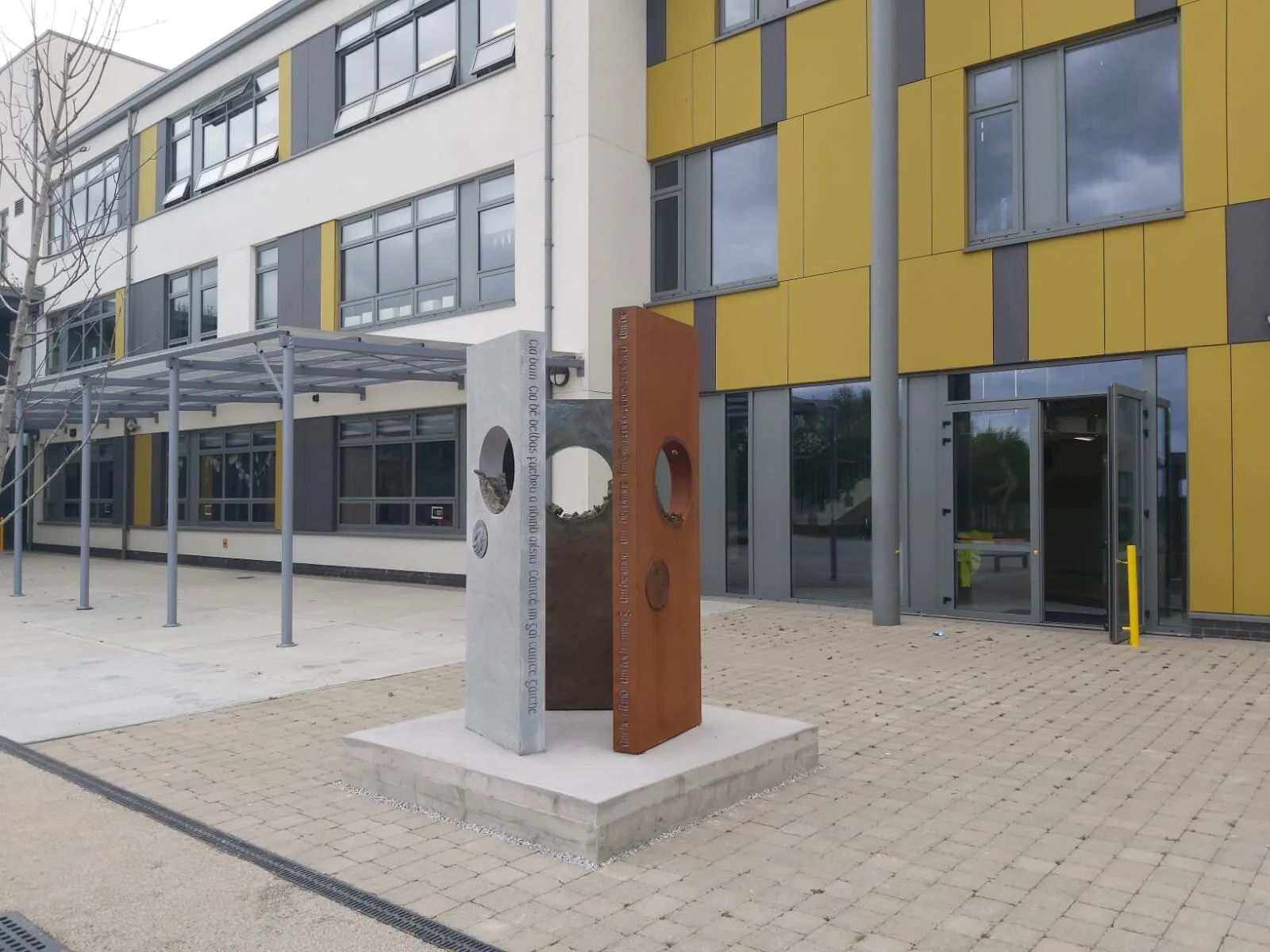
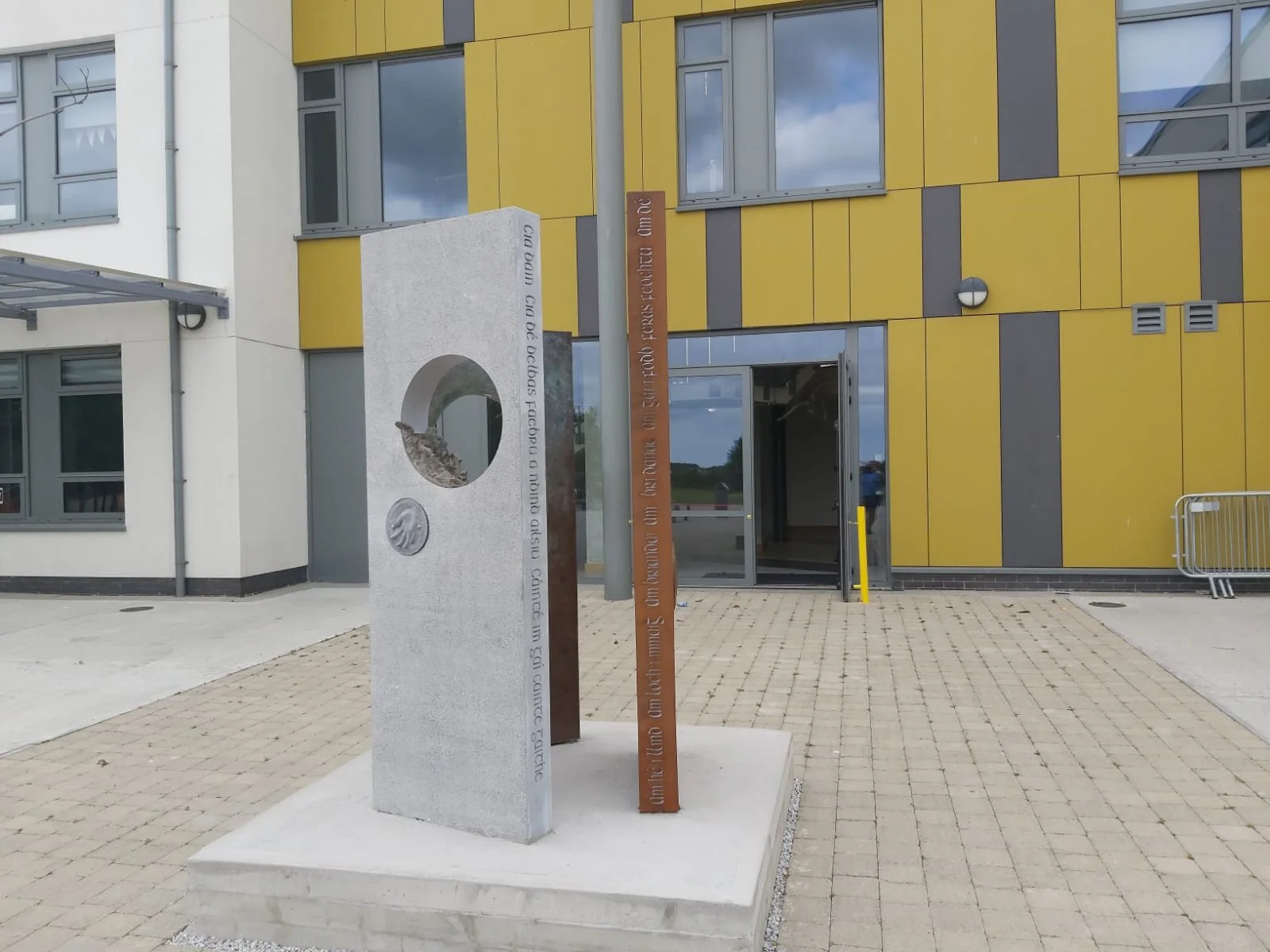
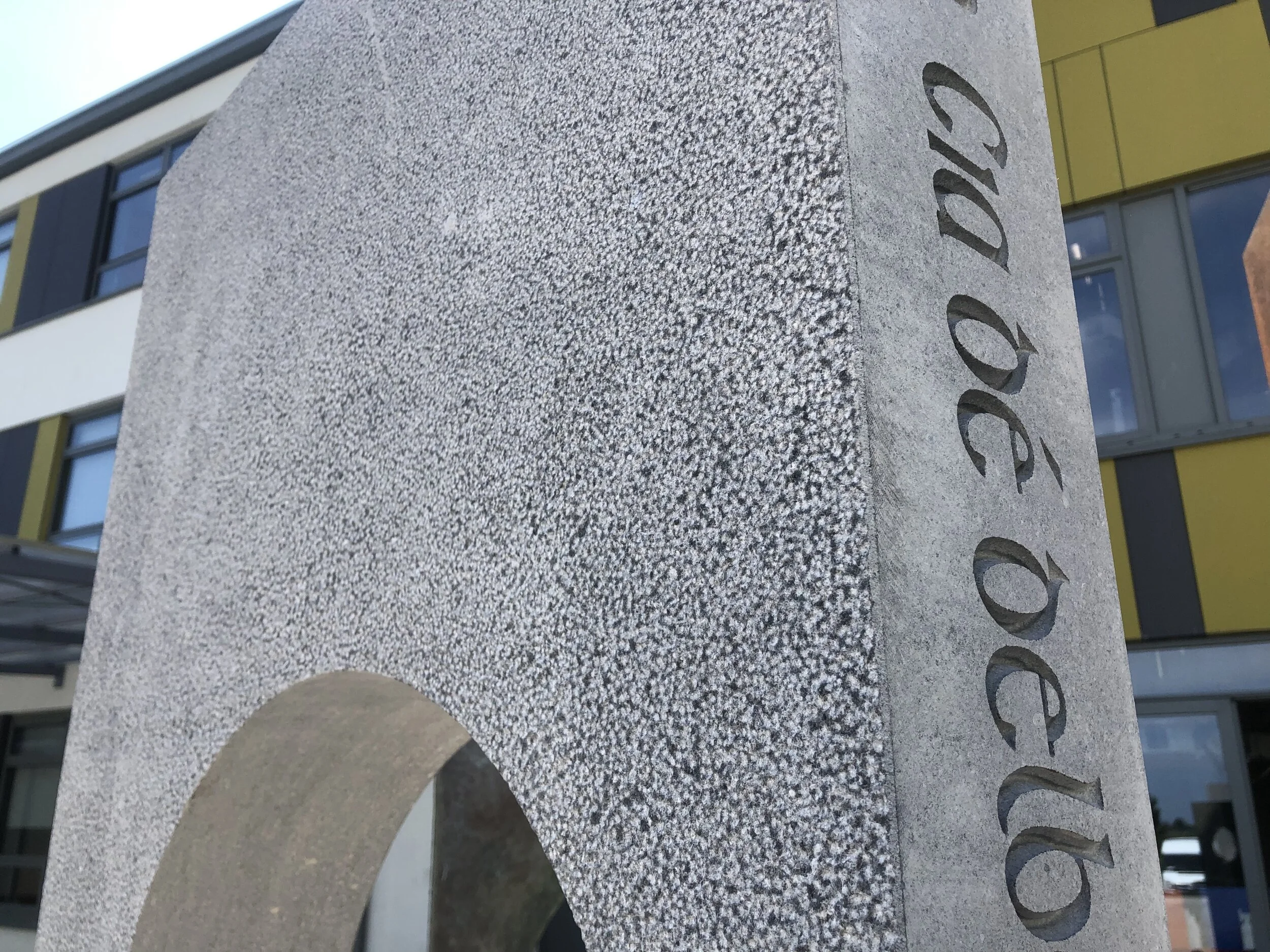
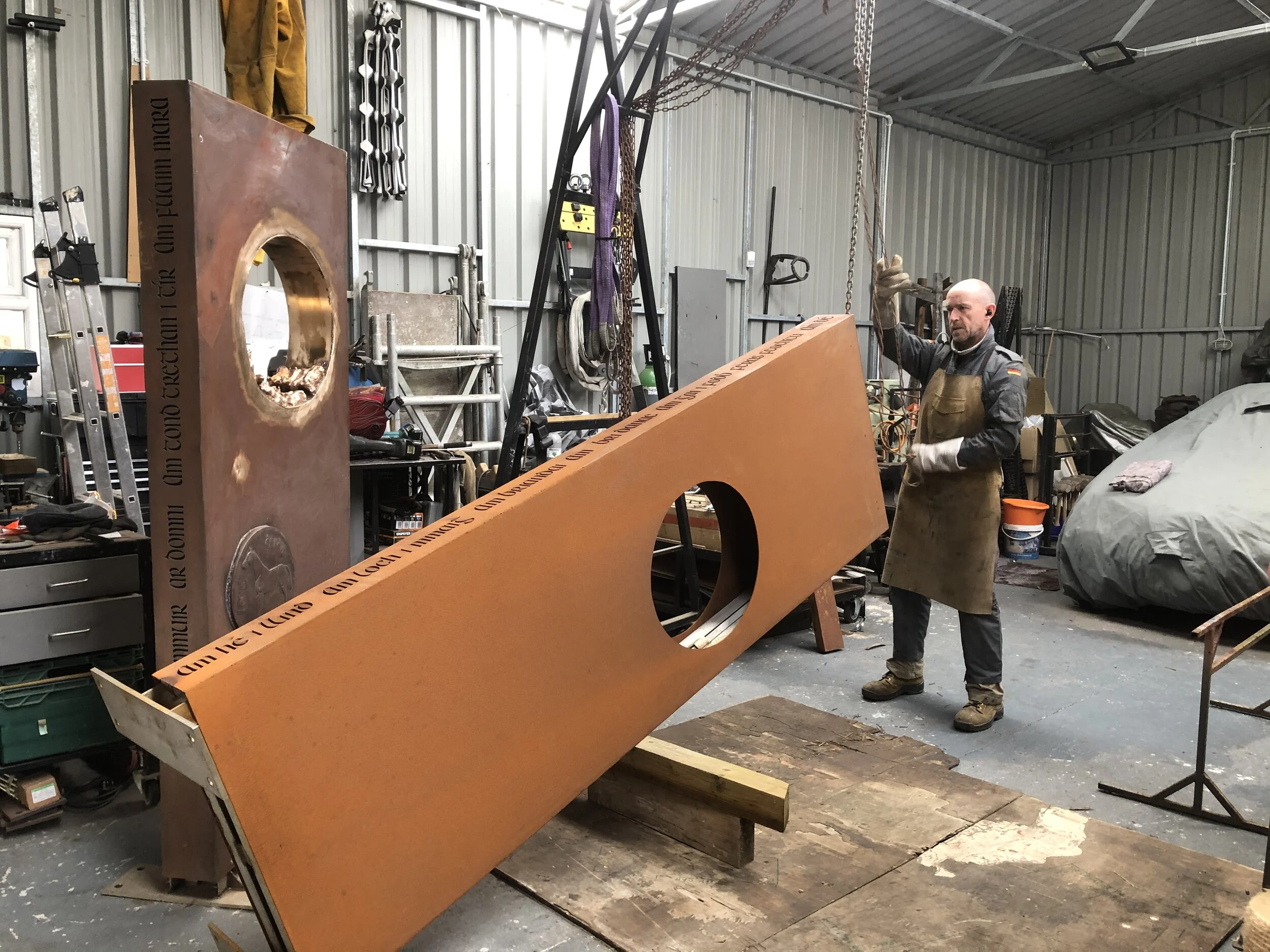
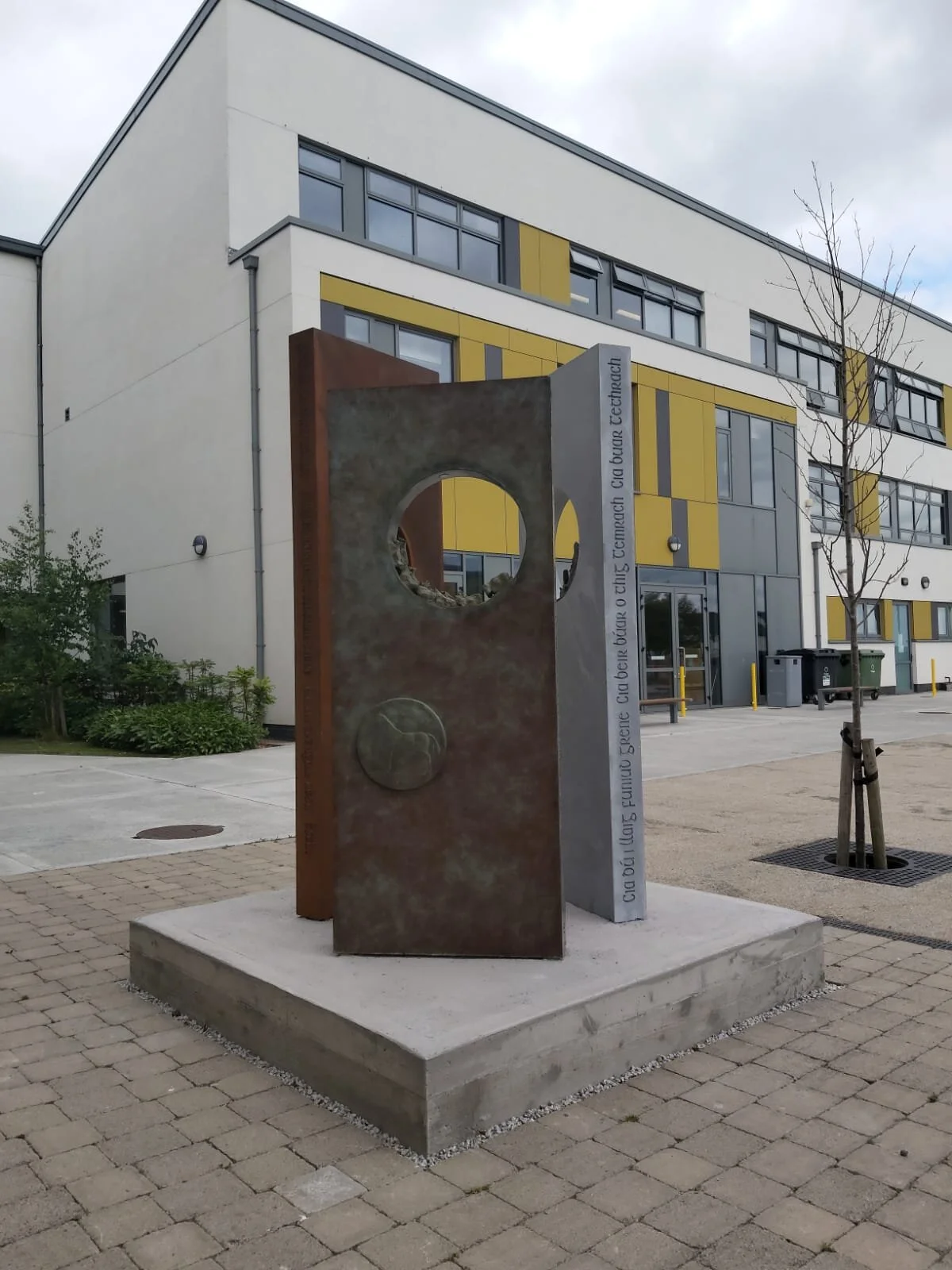
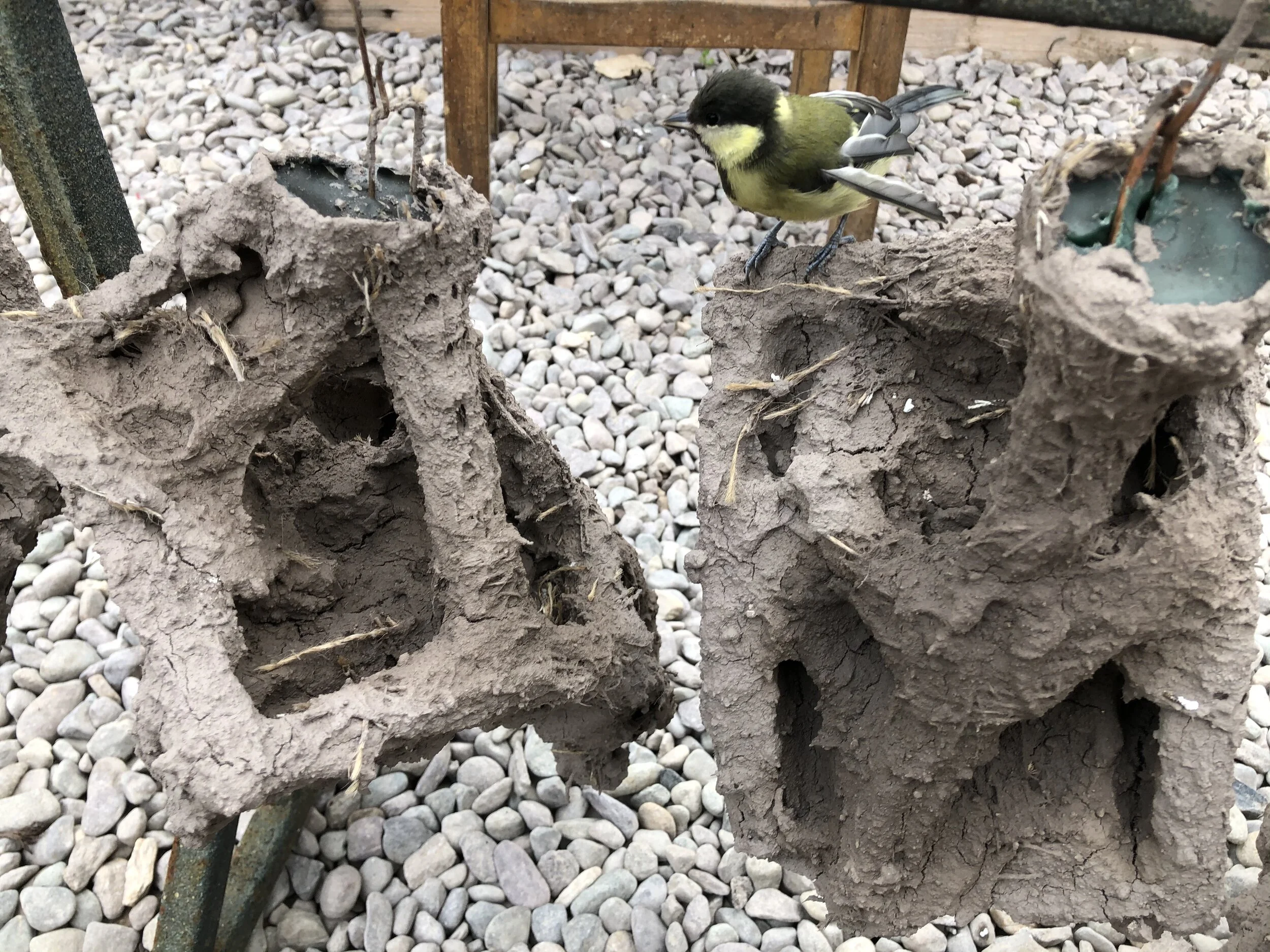
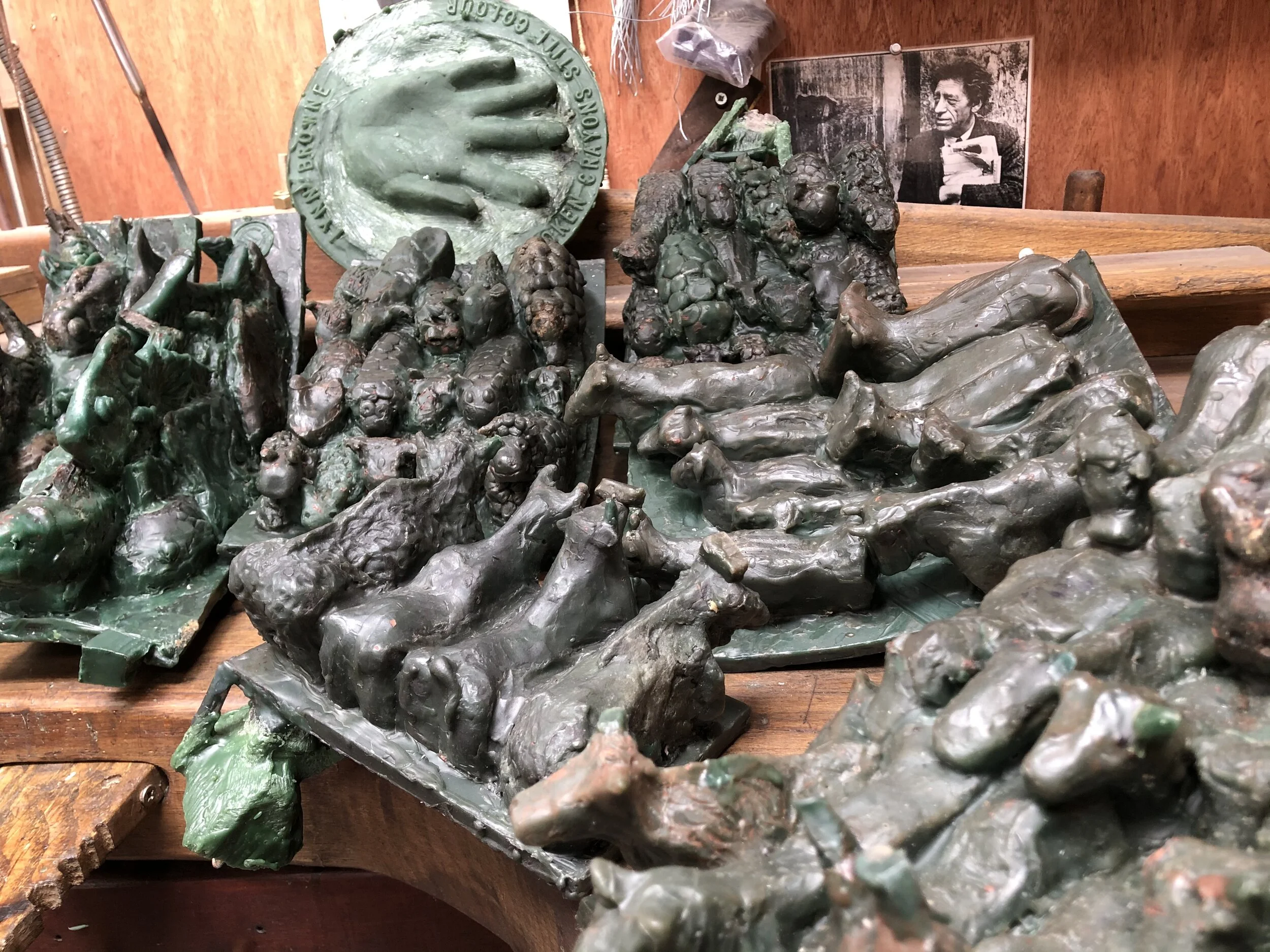
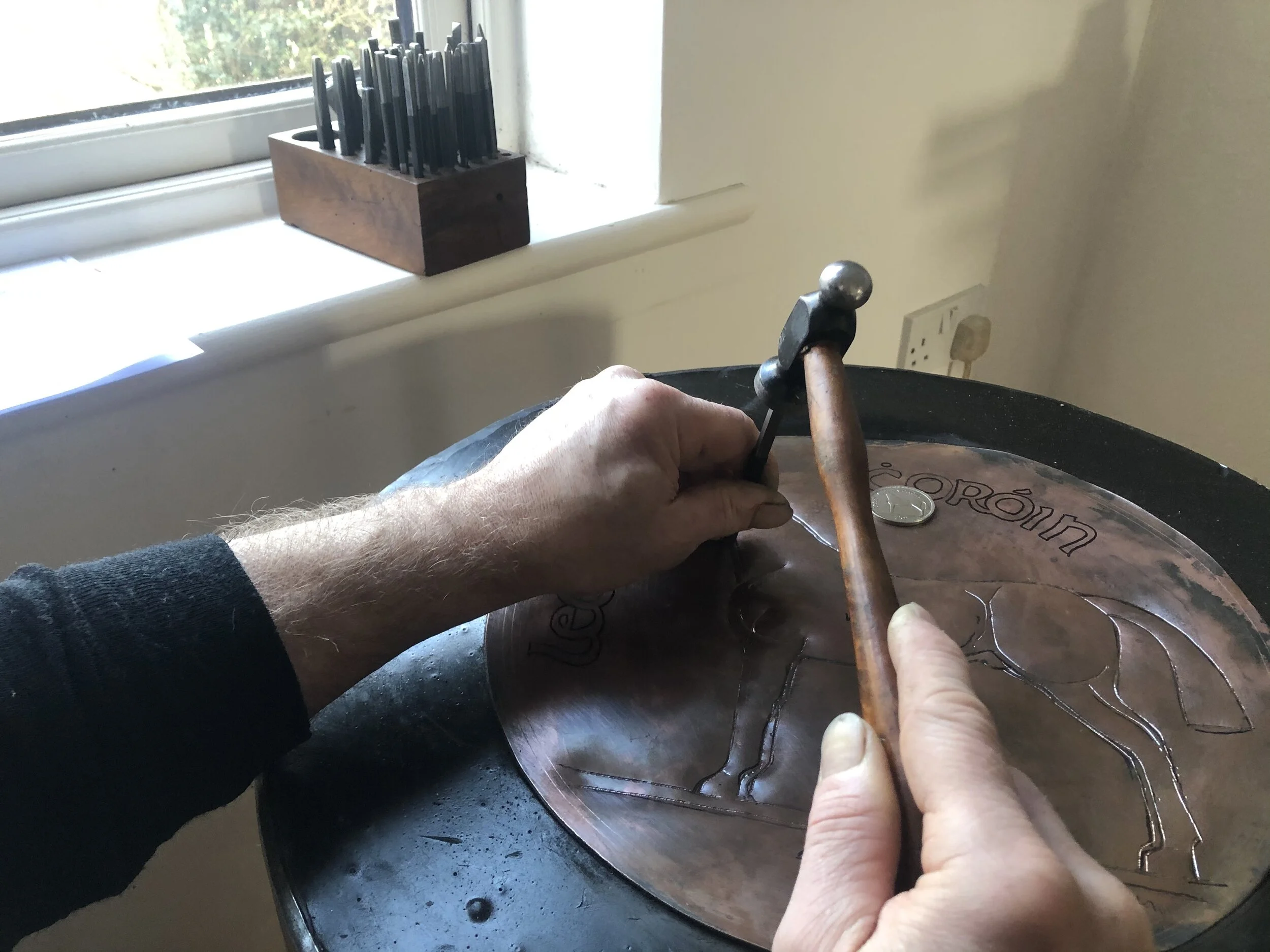
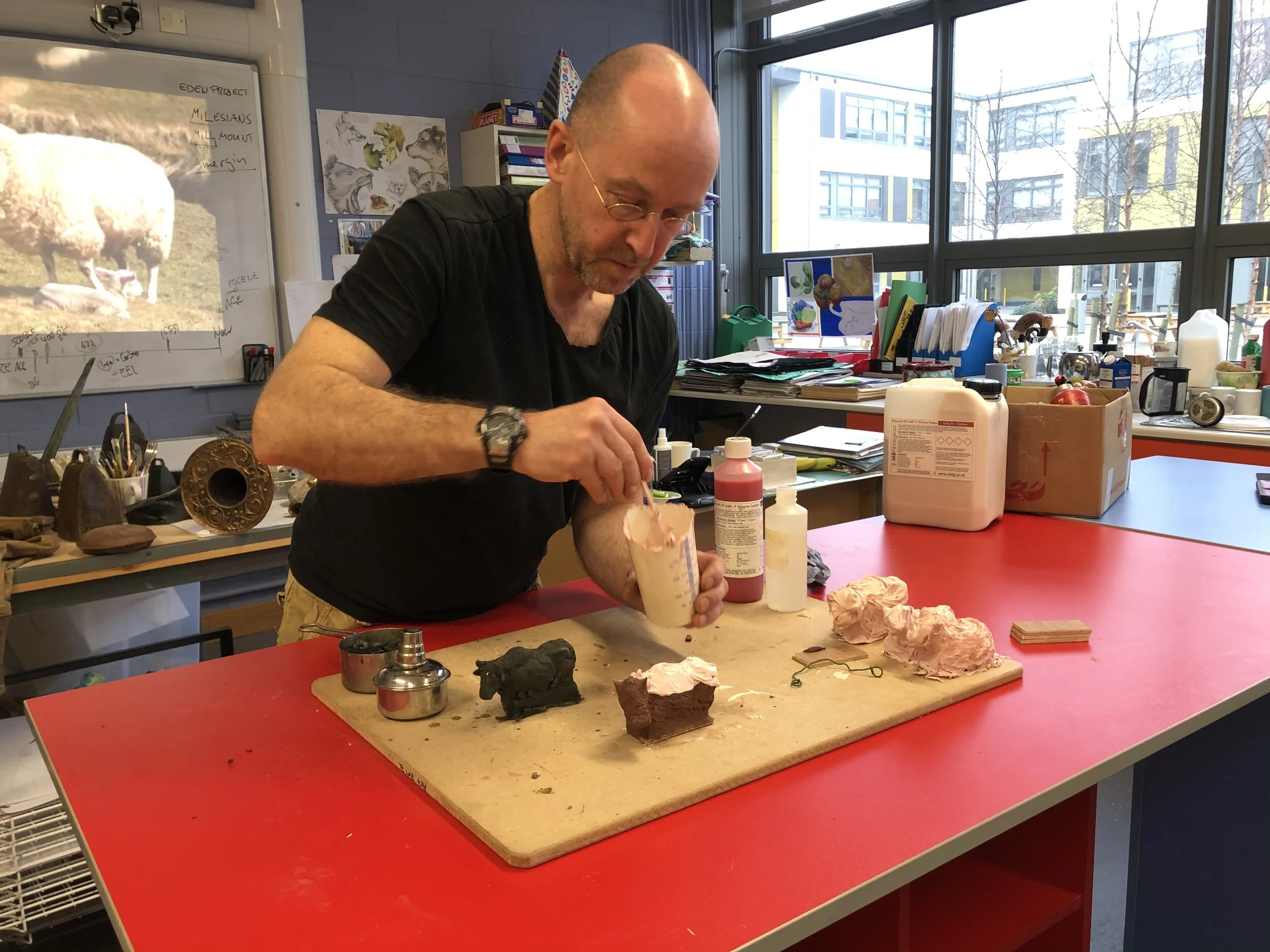
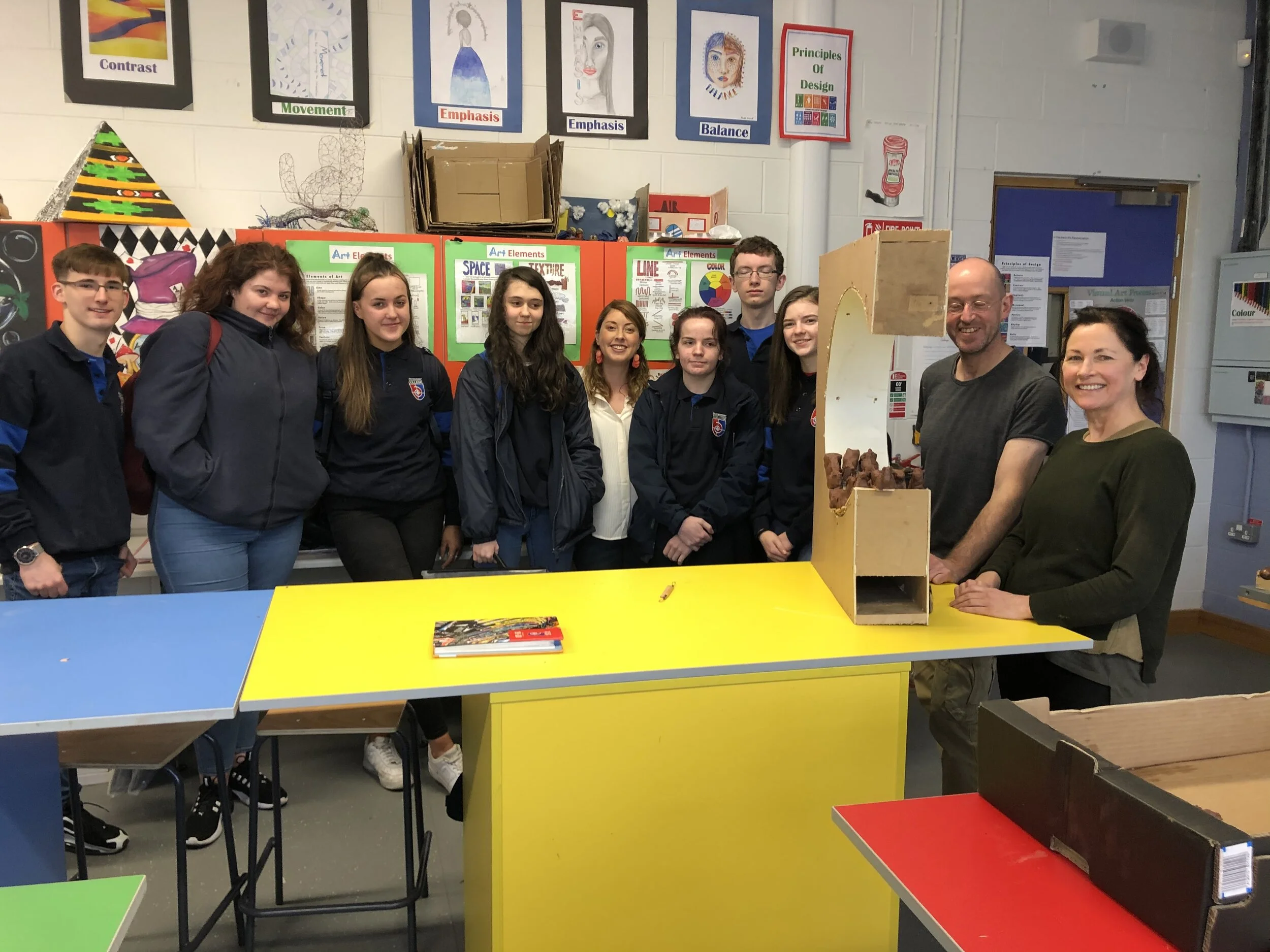
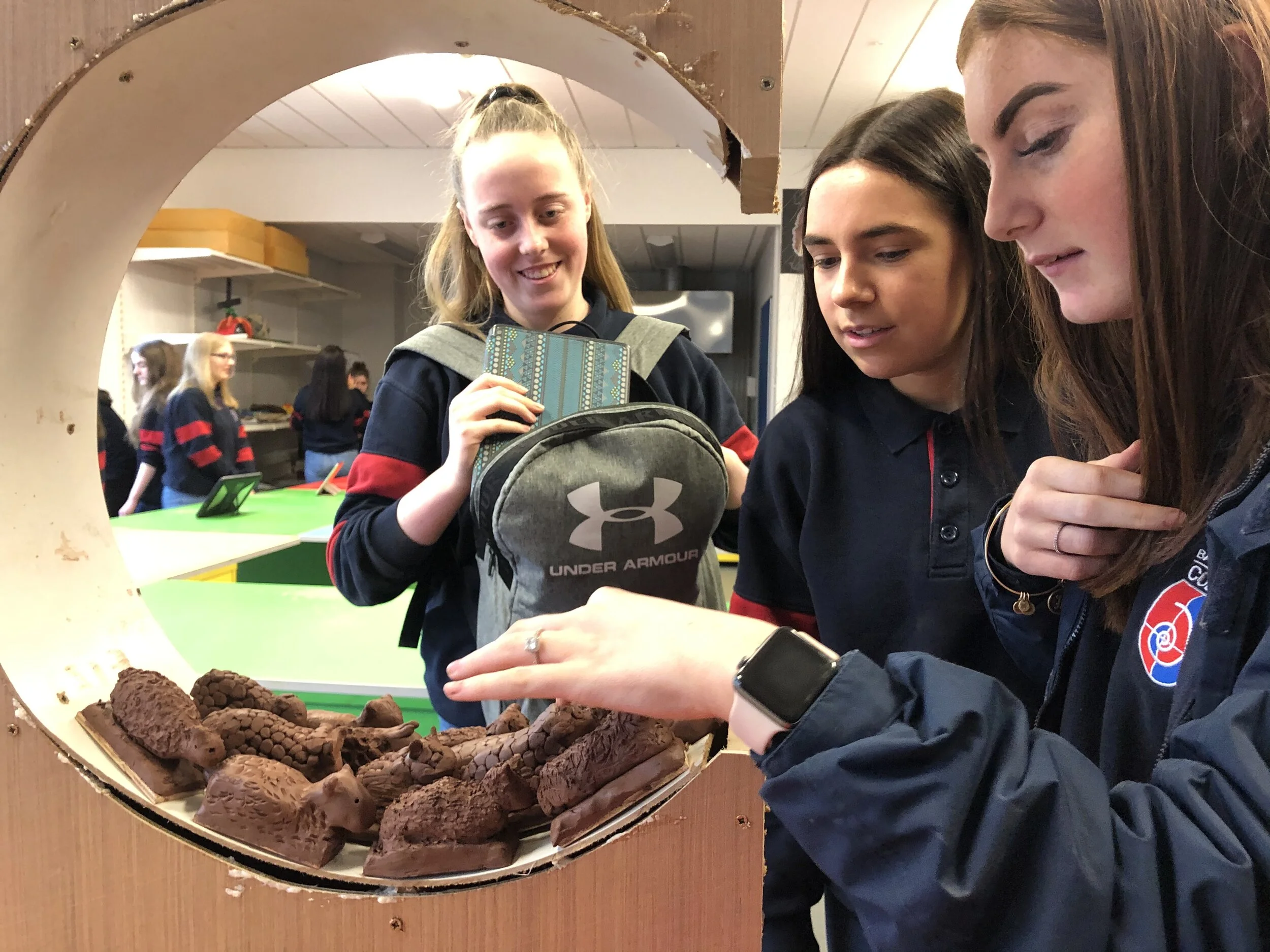
Ballymakenny College Public Art
Three Ages
Three Ages is a public sculpture commissioned under the Per-Cent-for-Art scheme to mark the completion of the new school building for Ballymakenny College. It was designed and made by Kerry-based sculptor Holger Lonze together with students and staff of the school in 2020/21.
The various materials of the vertical slabs signify three prehistoric eras that are particularly significant for the Drogheda area: the Stone, Bronze and Iron Ages. The theme of animals and agriculture informed the inserts - cattle, fish and sheep - which were individually modelled by students in wax before being assembled and cast in bronze, using the ancient lost-wax-process. The plaques are based on early coins which were designed by Percy Metcalfe for the new Irish Free State to the theme of agriculture and animals in 1928. They were fabricated using sheet bronze and another ancient process, repoussé, alternating hammering and annealing/softening of the metal. The Song of Amergin a significant 11th C. poem in medieval Irish runs along the edges of the slabs. Amergin, the poet and lawmaker of the mythological Milesian invaders who brought the Irish language from Northern Spain is buried on Millmount in Drogheda, according to the ancient legend.
Dedicated to the memory of Lynn Browne, Jill Amante and Oliver Tully
For more information on the context and ideas behind the work, download the PDF below: